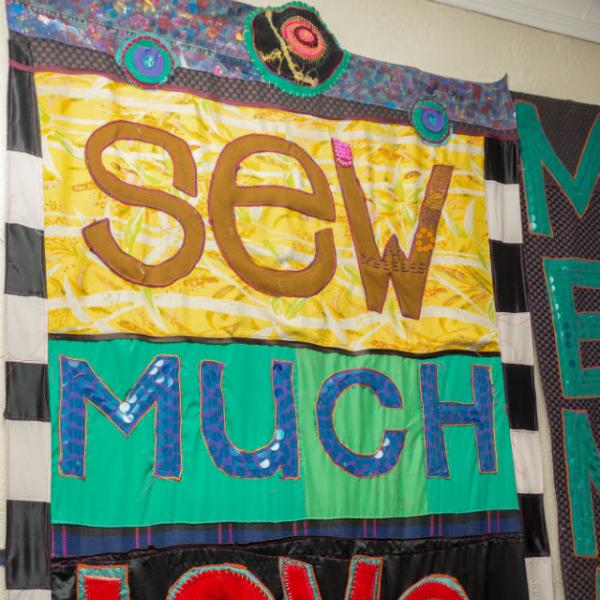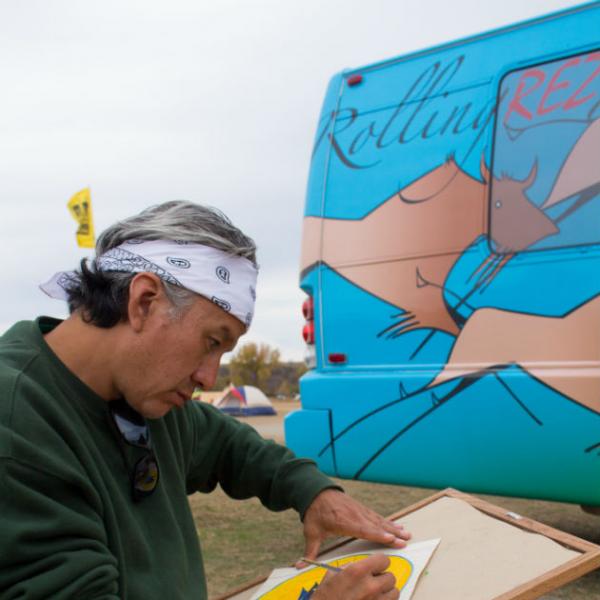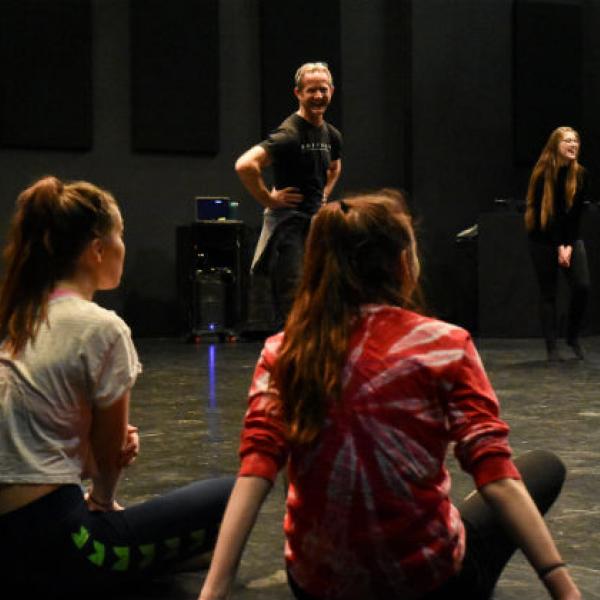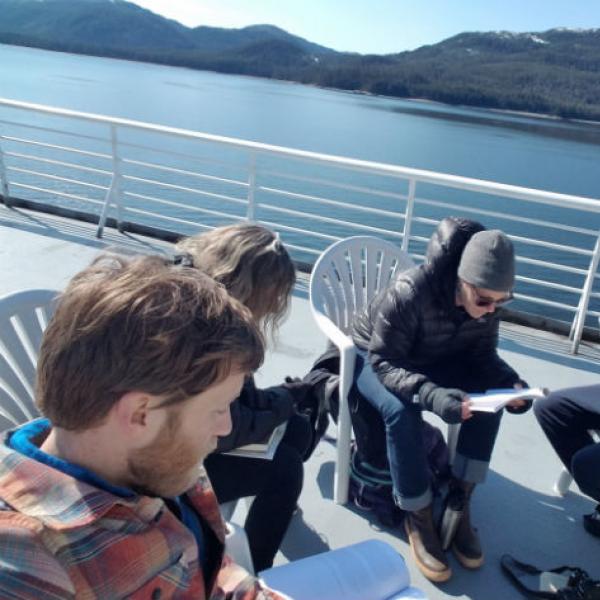The Delta Blues Museum
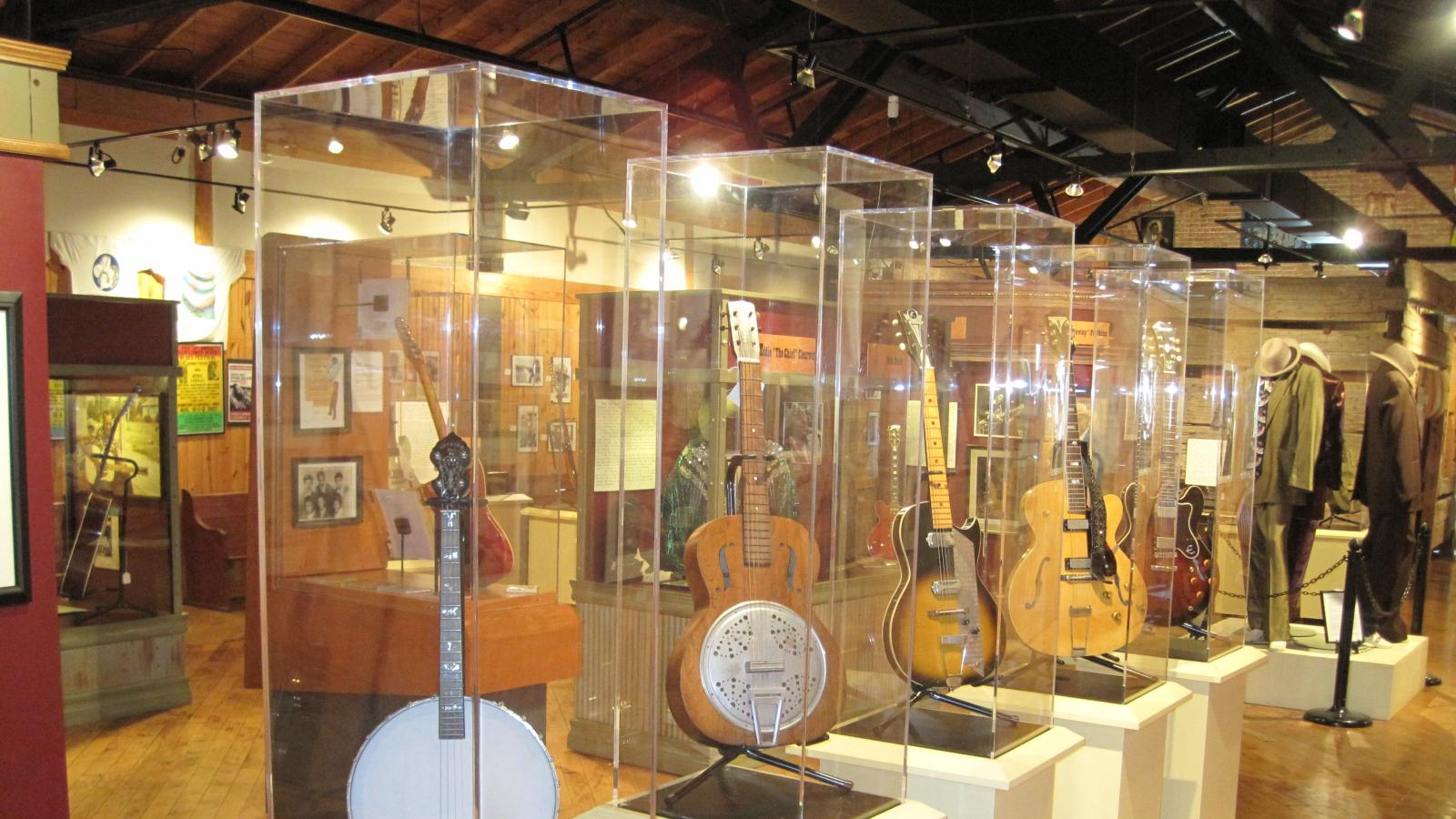
The Delta Blues Museum is in the heart of the Mississippi Delta—one of the few museums in a rural farming area in the South. Yet, it has become a cultural center, welcoming visitors from abroad and providing area residents with music and programming. With some help from the National Endowment for the Arts, the Delta Blues Museum created an award-winning arts education program that serves the young people in the community. And like the blues itself, it happened organically.
Jo Reed: So while the Delta Blues Museum is in the countryside, it is programming for two very different audience: foreign visitors and local residents.
Shelley Ritter: Every day we have people from all over the world coming to Clarksdale, so we have to kind of explain to people from Europe and other countries even though things have changed in the Mississippi Delta, agriculture is still a real part of our history and heritage, and it’s these blues men and women that had these agricultural jobs so long ago that created this art form. (Music Up) Jo Reed: But the local audience is always at the center of the museum’s planning--particularly the young people in the area Shelley Ritter: We have an afterschool music program called the Arts and Education Program. It teaches students of all ages how to sing and play the blues, and it is led by four local musicians here in town, and they teach students how to sing and play the blues by actually doing it. The museum provides instruments, guitars, keyboards, bass, and drums and mics and vocals so you don’t have to have an instrument to be a part of our program. And so that’s part of our local audience as well as school groups that come through the blues museum. We get city funding to help us operate, and because we get that city funding we are free to residents of Coahoma County and that really helps with our school districts. You know, they can bring a class at no cost or Coahoma Opportunities can bring in their Head Start children, or just locals can come. Even if they have a guest they pay admission for the guest but they can come in free, and so it keeps it vibrant within the community. Jo Reed: The Delta Blues Museum’s arts and education program also began organically--with a boost from the National Endowment for the Arts. Shelley Ritter: Our Arts and Education Program is actually a result of an initiative started by Mr. Johnnie Billington, and he had a garage repair shop, and if he didn’t have any business he would sit around and pick his guitar. And youth who weren’t doing anything kind of showed an interest and started kind of hanging around, and he began offering them lessons. And at some point, probably in the late ’80s the Delta Blues Museum found out about it and got a grant from the Mississippi Arts Commission and the NEA to employ Mr. Johnnie Billington to come over and offer music lessons to a greater group of students, and it became a part of the museum. Mr. Billington unfortunately has passed on, but that’s really how our Arts and Education Program started, and it’s really amazing. Currently we have two students who learned under Mr. Johnnie as instructors in our program, so that’s really neat to see it come full circle. Jo Reed: As the museum grew and the arts and education program flourished, it was time to move from the local library to a building of its own Shelley Ritter: We were kind of a little bit too loud to be housed in a library, and so in 1999 the City of Clarksdale rehabbed the historic Passenger Freight Depot built around the turn of the 20th century, and the museum moved in there. And it really is a great location to have a museum because it’s just a big, nice, open depot space with iron tresses and beautiful old wood. Jo Reed: Not only was the building historic, its location is part of blues lore. Shelley Ritter: We are at a very famous crossroads, the intersection of Highways 61 and 49. (Music Up) That is allegedly where Robert Johnson sold his soul to the devil, that those of us who are blues scholars know that that didn’t exactly happen according to Robert’s family, but Tommy Johnson and Peetie Wheatstraw, the Devil’s Son-in-Law, also laid claim to having done that, so any of them could’ve done that here at night long ago. Jo Reed: The Delta Blues Museum’s assembled collection to give a sense of the social history of the blues and its cultural importance today with musical instruments, recordings, sheet music, posters, photographs, costumes, folk art, paintings, and other memorabilia. Among its highlights are guitars from B.B.King, Big Joe Williams, Jimmy Burns and John Lee Hooker. There’s a display devoted to Big Mama Thornton. But one exhibit stands out. Shelley Ritter: ...the Muddy Waters Cabin from Stovall Plantation, and so we have that as a focal point in our we call it the Muddy Waters Wing. (Music Up)Jo Reed: The arts and education program makes sure that the students understand the history of the music they’re playing.
Shelley Ritter:We get the students to come early and walk through the galleries so that they see when they learn a song by John Lee Hooker or Muddy Waters, for instance, they can go through the gallery and learn their story, and then they begin to understand the references in some of the songs to places in Clarksdale or even in Mississippi, so it kind of grows that way.Jo Reed: The museum’s art and education program teaches students of all ages, abilities, circumstances, and needs.
Shelley Ritter: The students that come to our education classes come to us from various points in their lives. Some of them are at risk and so their parents want a safe place for them to be there. Some of them want to learn how to play a particular instrument. Some are in well-known blues families and so understand the blues, but they all kind of come to us with a different need but all coming as the museum is a safe place and something to do. And because of the way we structure our class, which is really not very structured, we don’t tell you that you can't do it. You just sit there with this guitar or the drum or the bass until you can do it. And we switch the students around, so you might not be the greatest bass player. You might be a fantastic drummer, but you’re not gonna beat down on the bass player because he’s not getting the licks because you can't do it either, and so they really develop this communal sense within themselves and they learn and grow to play as a band. And also when bands come to town to play you’re not just a bass player or a guitar player. You know, if somebody’s looking for a bass player, “Oh, yeah, I can play bass.” “Oh, I can play keyboards.” “Oh, I can play drums.” And it really makes a more rounded musician. And many of our graduates of the program will come back and say that they are able to have the talent that they have no matter if they’re still playing blues because they learned blues, and they get that it’s a roots music. They come back and say, “Wow, I’m so glad I did this at the Blues Museum. Thank you.”Jo Reed: One outgrowth of the education program is The Delta Blues Museum Band.
The Delta Blues Museum Band is made up of students who are our advanced students, and if we do a performance somewhere, especially if we have to travel, it’s made up of those students because we want to showcase our best. If we are playing local festivals, if we have someone who-- we can engage more of the students, maybe some beginners on a drum song or singing backup or something like that, we incorporate them, too. But generally the Delta Blues Museum Band consists of students in our intermediate/advanced classes. (Music Up)Jo Reed: And Shelley Ritter is quick to point out that the band has recorded and produced not one but two CDs.
Shelley Ritter: From Clarksdale to Kansas City, Volume One and Volume Two. We created the CD-- I was going through some albums and when I was in the junior high and high school band we made records. And so I took them in and embarrassed myself by letting the students see me in the seventh grade and forward and asked if they wanted to do a CD and they did. So we engaged them in every process. They created their own album artwork. They created their own title. We had guest artists come in to work with them, we had a Hill Country artist come in and taught them a Hill Country song, and then they performed with them. We had a local artist, Bill Abel, come in and they built a cigar box guitar and then they recorded a song on that. That was really interesting because they got down into how the guitar actually works and the tunings and back to the roots of the one-string guitar. And Charlie Musselwhite even guested on one of the CDs, so we had a lot of fun with that. And we had an attorney come in and explain copyright and publishing to the students so they get a bigger sense of what a career in music could entail besides just being a performer. Jo Reed: The Delta Blues Museum has received many awards throughout the years but one stands out. Shelley Ritter: In 2014 the Delta Blues Museum Arts and Education Program received a National Arts and Humanities Youth Program Award, and we were one of two programs selected to perform at the White House in the East Wing for First Lady Michelle Obama. And so we go to Washington. We stayed in a great hotel not far from the White House, and we’re walking over to rehearse on a Sunday. We set up in the East Wing and crank it up and blow a fuse. Literally, lights off in the White House. (Music Up) And so then we get that back and then we got to perform and the First Lady--she was right there on the front row, and it’s just something amazing that I got to share with those kids.Jo Reed: Clarksdale is a rural community, and museums, generally, tend to be in more metropolitan areas. I wondered how the rural setting might affect the programming of the Delta Blues Museum.
Shelley Ritter: It is unique to be at the Delta Blues Museum in a rural community because I’ve worked in the museum profession for several decades, and what I’ve kind of realized being here in Clarksdale, the museum sort of started organically because the tourists were coming here and looking for something, so the library tried to feed that need. And if you can step back and really listen to your visitors as well as your community members and build from the inside out instead of from the top down things seem to work a little more. We get a group of students to learn how to sing and play because we let them sing and play until they can do it. <laughs> I don't know if that makes a lot of sense. We have to be flexible. For instance, last year out of the blue a high school senior popped into the museum and said, “I’m looking for community service hours. I’ve always wanted to be a tour guide at the Blues Museum. How could I do that?” And we were like, “Okay, you can do that.” And he wound up bringing in 26 other high school juniors and seniors, and so we started a high school docent program because they wanted one, not because the mandate for this year was engage high school students or whatever. <laughs> It’s just kind of how you have to roll. (Music Up) Jo Reed: That’s the executive director of the Delta Blues Museum in Clarksdale, Mississippi, Shelley Ritter. For NEA Arts online, I’m Josephine Reed. Thanks for listening. Music Credits: Excerpt of "Cross Road Blues" by Robert Johnson from Robert Johnson: The Complete Recordings, used courtesy of Sony Music Entertainment and by permission of The Bicycle Music Company. [BMI] Excerpt of "Mannish Boy" by McKingley Morganfield, Ellas McDaniel, and Melvin London, from Hard Again, used courtesy of Sony Music Entertainment and by permission of BMG Rights Management [BMI] Excerpt of "The Day The Blues Got The Blues" by Richard Crisman, performed by the Delta Blues Band, from From Clarksdale to Kansas City, Vol. 1. Used courtesy of the Delta Blues Museum and by permission of Richard Charles Crisman III /BMI. Excerpt of "The Blues Is Not Exclusive" by Bill Perry, performed by the Delta Blues Band, from From Clarksdale to Kansas City, Vol. 1. Used courtesy of the Delta Blues Museum and by permission of Billie Perry Music / BMI.

